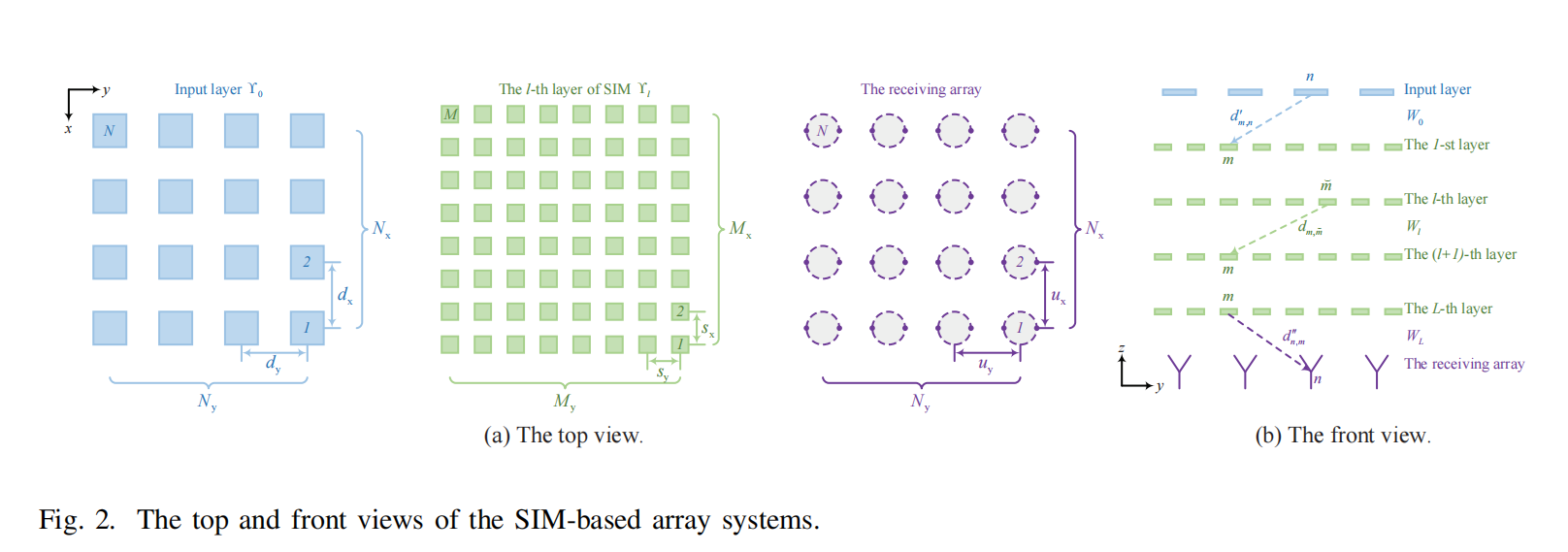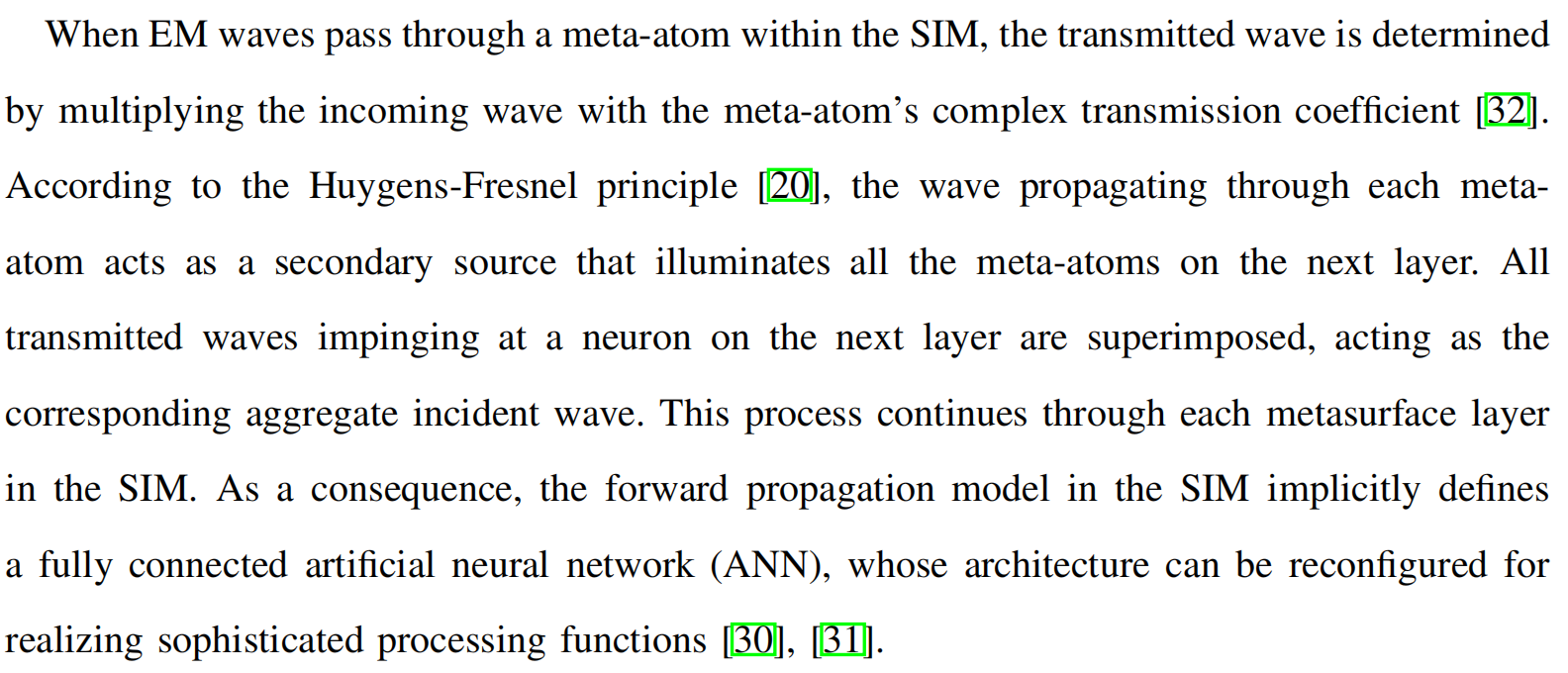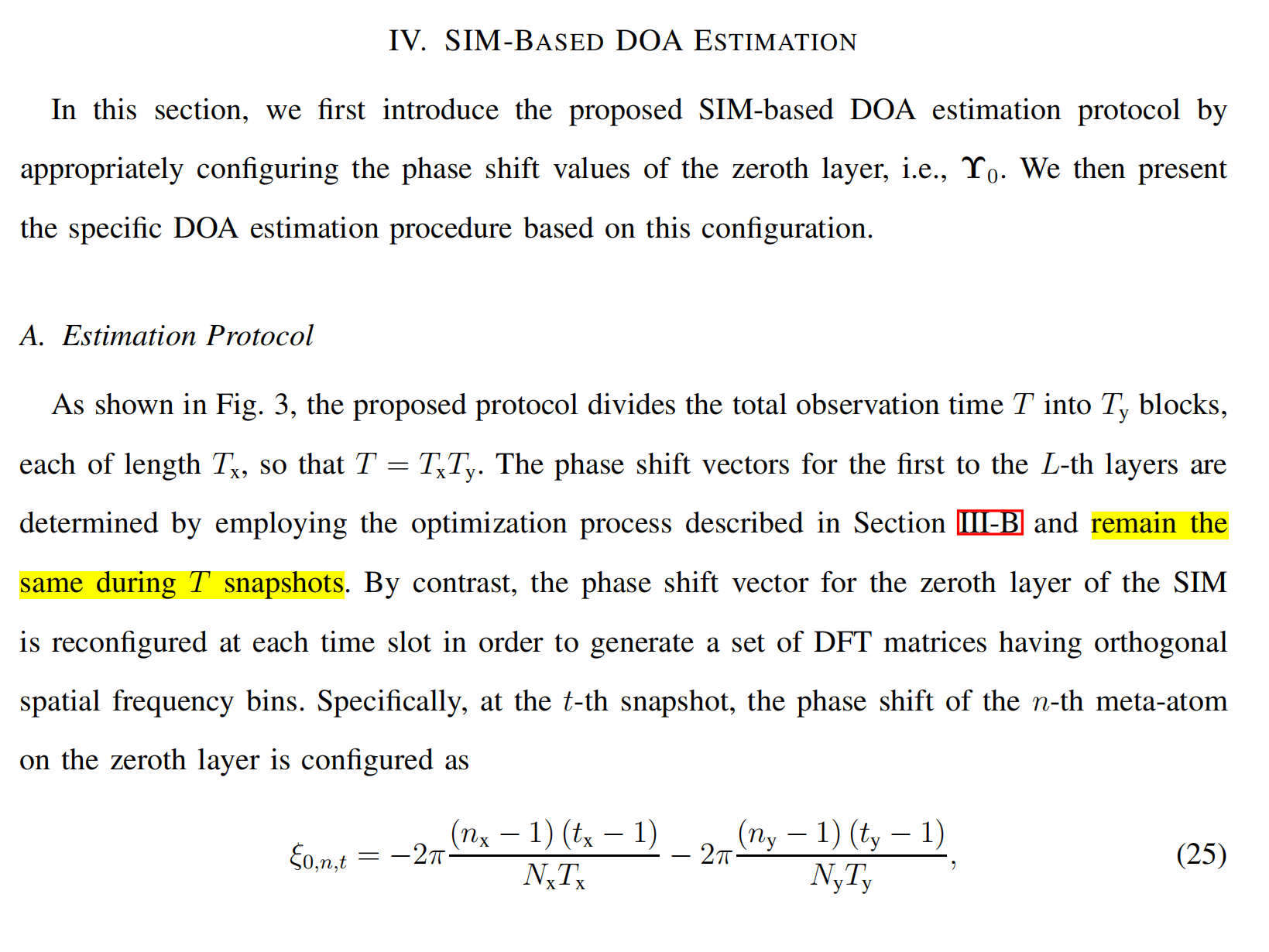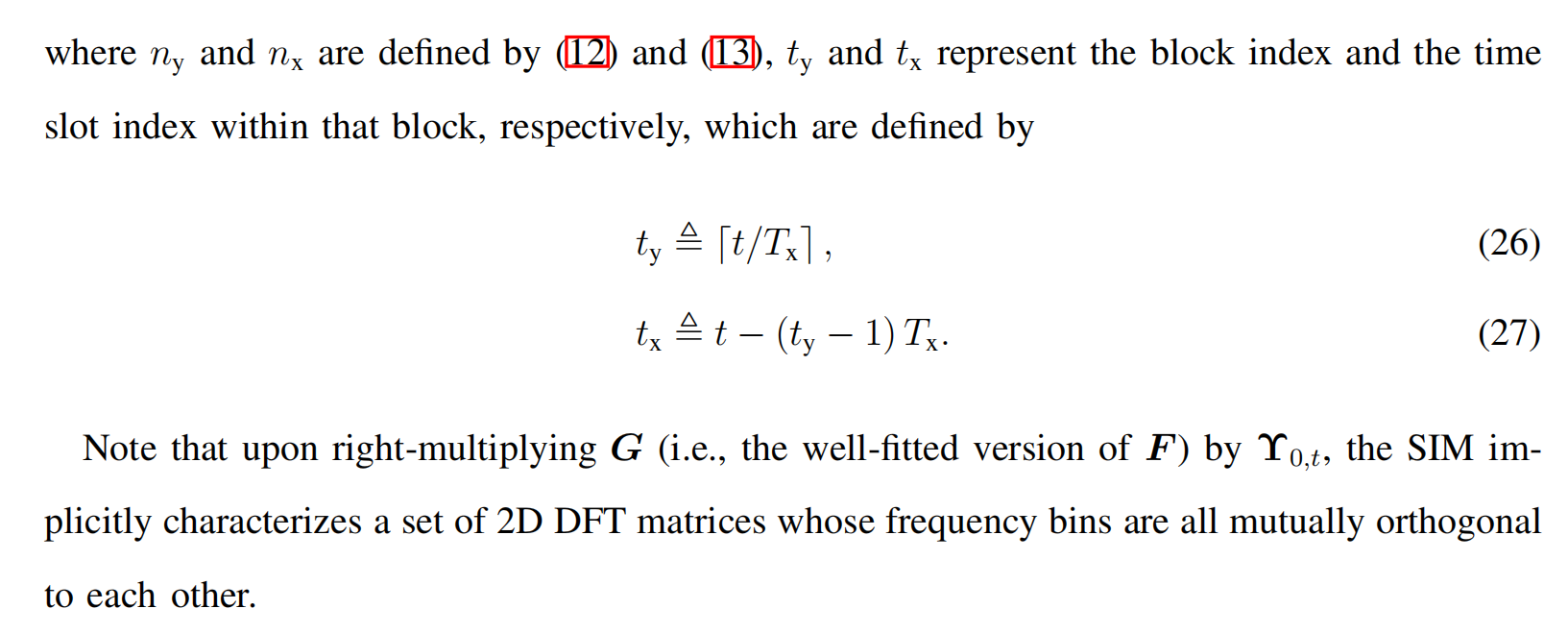Approximating DFT Matrix Through Stacked Intelligent Metasurfaces
Two-Dimensional Direction-of-Arrival Estimation Using Stacked Intelligent Metasurfaces
Quick Overview

- Stacked Intelligent Metasurfaces: 多个RIS堆叠,densely integrating multiple metasurface layers
- An advanced SIM in front of the receiver array automatically carries out the 2D discrete Fourier transform (DFT) as the incident waves propagate through it.
configure the phase shift pattern in the zeroth layer of the SIM to generate a set of 2D DFT matrices associated with orthogonal spatial frequency bins to improve the DOA estimation accuracy further.(没怎么懂)
evaluate the performance of the proposed SIM-based DOA estimator by deriving a tight upper bound for the mean square error (MSE)
- 空中计算
- SIM的四个关键参数
- The thickness TSIM of the SIM;(总共厚度,总厚度/层数=间隔)
- The number L of metasurface layers; (多少层)
- The number M of meta-atoms per layer; (每层多少个element)
- The spacing between elements in the x and y directions, namely sx and sy; 单元间隔
传统的DOA估计方案,受到瑞利准则限定,入射角度需要大于波束宽度才能被区分。
基本原理

充当ANN/fully connected neural network.
在最初的文章[1]中,作者通过5块SIM来进行手写数字识别
- 第一个超表面层充当DAC,灰度转换。其余四层是fully connected neural network.
- 本文将SIM集成到接收端,在接收端进行自然地计算(2D-DFT)从而使得能量在最后一层的某个点汇集,通过检测不同接收器探头的能量水平(每个探头对应一个独特的 DOA),我们可以从具有最强能量的探头读取信号的方向。
- 自然计算,没有任何延迟
- Adjust the phase shift in the zeroth layer of the SIM for each snapshot to generate a set of 2D DFT matrices having mutually orthogonal spatial frequency bins to improve the accuracy of estimation.
System model
SIM model
- 每一层的信道建模为:

值得注意的是,输入层和输出层单元数不是那么多,距离计算方式有点变化。
记和分别为 complex-valued transmission coefficient vector and the corresponding matrix for the input layer (i.e., the zeroth layer),所以整个系统模型被建模为:
Received model
Received model和正常的RIS类似:
- 虽然包含大量矩阵乘法,但是这些矩阵乘法都是在传播过程中自动发生, 即以光速进行运算的。
Problem and Solution

其中是2D DFT matrix,目的是将搞成和相同功能的东西,然后通过传播过程中自动计算
(空中计算)。
设计梯度下降算法进行求解。
Accuracy Improvement
没读懂



SIM实现了一个维度很小的DFT,这样只能返回一个很粗糙的on-grid 的离散估计值。通过在不同时刻调第 0 层的相移,这样可以生成一个不同频率格子DFT,每个时刻的频率格子是”正交“的,这样,可以通过增加快拍数,返回一个更精细的on-grid 估计值,
比如只关注一个俯仰角维度,2-point DFT,它划的格子对应的空间频率是0度,90度,比较空间谱能量,只能把来波方向(比如35度)测到0或者90这两个中的一个,但是可以通过调0层相移,把格子的频率给改了,改成1,91,再下一个时刻2,92,这样靠时间堆出来一个分辨率更高的格子,最后就能测出是35度。
Reference
- C. Liu, Q. Ma, Z. J. Luo, Q. R. Hong, Q. Xiao, H. C. Zhang, L. Miao, W. M. Yu, Q. Cheng, L. Li et al., “A programmable diffractive deep neural network based on a digital-coding metasurface array,” Nature Electronics, vol. 5, no. 2, pp. 113–122, Feb. 2022. ↩
本文作者: Joffrey-Luo Cheng
本文链接: http://lcjoffrey.top/2024/02/27/SIMDFT/
版权声明: 本博客所有文章除特别声明外,均采用 CC BY-SA 4.0 协议 ,转载请注明出处!